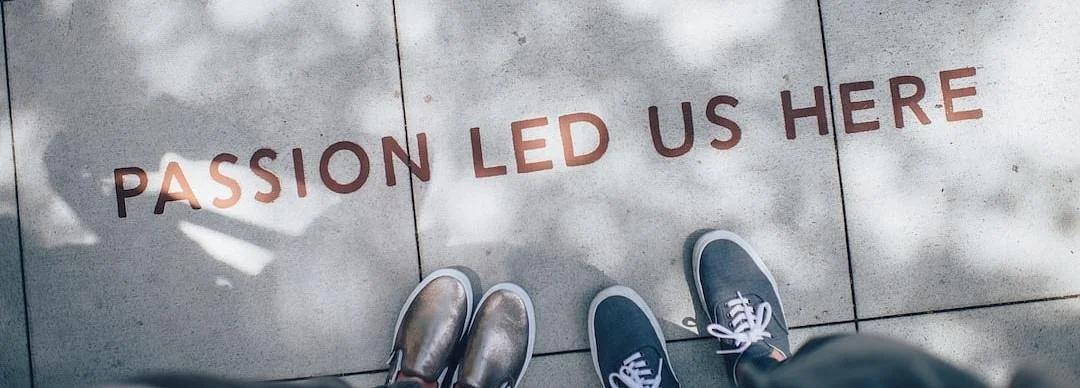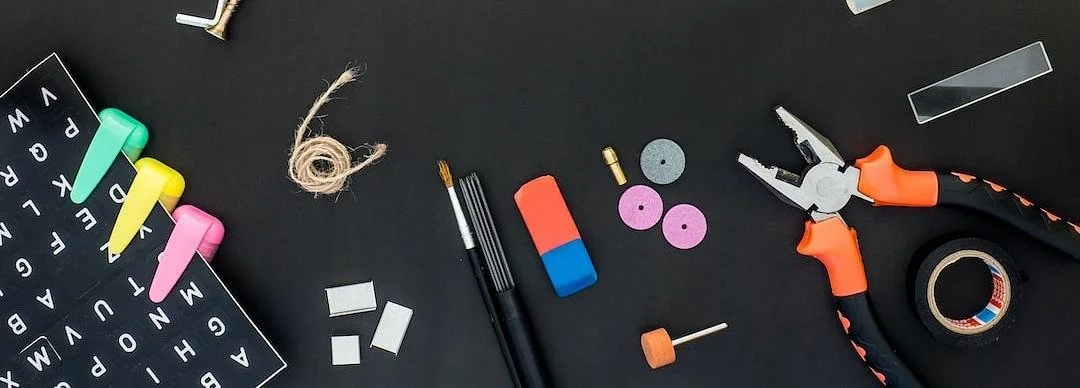Archiving a Socially Engaged Practice
By
Lexa Walsh
Published in September 2021 as part of the extended digital edition of Social Works? Open journal…
“How can artists and institutions collaborate to find a safe and functional way to archive the ephemeral practices of socially engaged art? What gets lost in a creative process that consists of meetings, emails, and one-off events?”
These questions and many more were presented to socially engaged artists and arts labourers through three workshops.
I held the first at the 2015 iteration of the Open Engagement conference in Pittsburgh, PA. [1] The next was with Social Practice MFA students from California College for the Arts in 2016. [2] Finally, I held a workshop with arts administrators at the Alliance of Artist Communities Conference in late 2016, addressing similar concerns from an organization’s perspective. [3] The resulting conversations were vast, and one thing rang true: too few of us are considering our legacies. I’ll add that for those of us who are part of marginalized groups, creating and preserving our own narratives and legacies is especially urgent.
The Proposition:
In fifty years, there will be a major retrospective on socially engaged art.
How will this work be contextualized? What, if any, visual, tactile ephemera will there be to show? Documentation? Related programming or re-creation of works? How will this be a conceptually compelling and visually interesting show? How will participating/collaborating communities and publics be represented? How will visitors understand both the process and the outcomes of this transient, ephemeral work? What about the sticky, embarrassing stuff? What can we learn from it and share without shooting ourselves in the feet?
Artists: what can you save to show? What are your responsibilities in preserving your legacy?
Institutions: how are you preserving the memory of this work? What are your responsibilities, whether from the curatorial side or education/public programs? What questions do we still have?
The Responses
Through small group work sessions, the participants engaged in generative conversations about what could be saved, presented, and conjured into a future show. After each question, they delivered back their findings. 'As women, we should really, really make sure we archive our projects. In the future, someone will be represented, and so it should probably be women and gender non-conforming, trans-inclusive peoples', noted one group. 'Women only, and two token men', joked another about who should be included in the exhibition.
Artist Responsibilities
Artists’ responsibilities include taking screenshots and saving emails, PDF’s, folders, and photocopies of their readings and research. Keeping transcripts of conversations that took place during projects was an astute observation. Other suggestions included keeping hard drives, process and finished-work photos, as well as all sorts of ephemera and promotional materials like notes, prints, readers, and projections. Supplementing this with newspaper clippings of the time and context was a brilliant addition.
Institutional Responsibilities
The most pressing responsibility of the institution is to consider and pay for projects to be archived, including hiring trained archivists for the job. Participants suggested creating an institution specifically for archiving social practice work. Museums and institutions should historicise the work, keeping track of concurrent practices, and ensure social practice is exhibited. They should visit artists’ studios and personal archives, accessioning collections of social practitioners’ work. Their education departments should host workshops to help practitioners learn archiving skills. Institutions should employ oral history as a method: the exercise of archiving using the tools of social engagement. Creating a time capsule of the present questions, frameworks and concerns, to trace their evolution in 50 years was suggested. Maintaining these archives was also a concern.
What does the show look like?
Participants were eager to explore whether a traditional exhibition best represents these practices? They emphasized the importance of directly including the voices of communities that were involved in the art being presented. Institutions should fundraise from diverse sources in order to present work as accessibly as possible, while reflecting on and sharing in public ways the institution is reflective of dominant power systems and how that bolstering of oppression is being negated, negotiated, addressed, or embraced. The show should include schools and activist practices. This seems particularly prescient now as MFA programs in the United States, at least, are suffering from under-enrollment and potential extinction.
Some suggestions for the exhibition’s content included activating work by re-performing them, creating and sharing videos, holograms, virtual reality, and providing drugs that evoke the emotional state of enacting the archived work, all to create an empathetic environment.
It was also suggested the 'exhibition' take place neither in a gallery nor a room, but instead in nature, or on an island in post-studio, post-museum, and post-institution tendencies. Publishing both physical and online was agreed upon. They discussed the many seminal socially engaged projects by living artists, and how they are being archived, such as Rick Lowe’s Project Row Houses, Mierle Laderman Ukeles’ Touch Sanitation, Suzanne Lacy’s oeuvre, Harrell Fletcher and Miranda July’s Learning to Love You More, and the work of Theaster Gates, Futurefarmers, Tania Bruguera, and many others.
How will participating/collaborating communities/publics be represented?
'With as much voice as the artist, with more voice than the artist' was the consensus.
Participants concluded that the representation of communities with whom artists engaged was essential, by being visually, verbally and physically present in the show and collaborating with the public/community to both design and promote it. The show could be an opportunity to build up the political/social structure of the participating and collaborating communities and publics. Important, too was to provide feedback mechanisms within the show itself. Use the power of the show or institution to aggregate, notice, and redistribute power to the communities and publics. Avoid tokenism, and contextualize the honest, actual situation in which the participation occurred. Choose language wisely about the public’s roles. Are they collaborators? Audience? Participants? Anti-public?
What questions do we still have?
So many important questions were conjured up by these discussions, especially related to imagining our futures, the resources and technologies they will hold, and for whom they will be available.
What if any, ‘institutions’ will exist in 50 years? Do we want institutions to exist? What kind? If not, what might take their place?
How will social practice artists have gained more power? What kind of power? More voice? Balance of voice with media?
Will social practice be more or less related to social change? To personal change?
What other disciplines do we need to learn about? Medicinal biochemistry? Coding? Psychology?
What technologies augment or inhibit social practice work? Is ephemeral art possible under ubiquitous surveillance?
Will we have electricity or not? How can we do/archive/show social practice work without electricity?
What will happen to Social Practice if Trump (any GOP candidate) becomes president? [4] What will a social/political change mean for funding? Opportunities? Social climate?
Will this be seen as an idealistic moment? A moment just before DISASTER? Just before population increase? Will this be seen as a privileged moment? A clueless moment?
What will be the overlaps of social practice art and activism? In 50 years will we, as social practice artists, have the freedom to make critical statements and ask difficult questions?
How will social practice work have created, contributed, supported refuge?
Will social practice art be absorbed by the advertising industry, as visual art has? [5] How will social practice (continue to) fill the gaps that government leaves?
Will companies have residencies?
Will we be in a slump or a peak in 2066? Will I even care when I’m 78 years old?
How will funding work in the future? Will there be corporate funding? Will the government provide more or less funding? How will phases of funding work?
How will social practice art represent itself? With leftover objects from ephemeral projects? Other ways? The gestalt structure of society?
Will social practice projects remain outside the ‘object-oriented art’ world?
Who are the collectors of social practice art? What do they collect? How much do they pay? When did they acquire it? How do you own a project? What does it mean for the artist to have someone own your work? Your whole project? What social practice projects are owned now? [6]
Will it be a given that 'the social' is a part of art? Will social practice be integrated more fully into the larger landscape of art? Or will it become more separated? What will happen to educational programs related to Social Practice?
How will the relationship of artist to public have changed or stayed the same?
How can we represent many voices in our work? Do participants have the right to permanently withdraw the record of their presence and if so, at what stage?
Should we start making a film right now that someone can use later? How can oral storytelling/the power of word-of-mouth be utilized to remember projects? What are other ways besides visual and written documentation to share projects with future publics? AKA can you create myths/stories/socially normalized narratives that are passed around?
How will social practice be regarded in history? Will it become a household phrase? Will a larger non-art public know what it is/was? Will it be like Andy Warhol? Will it be like the Mona Lisa? Picasso? Does the action of archiving redirect socially engaged practices from other more ephemeral practices?
If today is 'contemporary time' what 'time' will it be in the future? Do we value (our work) being remembered after we die (as artists)? Do we even want to be remembered? By whom?
Five years later, so many questions remain, and they are still relevant. Consider what your questions are. More importantly, perhaps, consider what are you doing to archive your legacy.
ENDNOTES
[1] Open Engagement was an international conference and artist project focusing on art and social practice. Directed and founded by Jen Delos Reyes in 2007, the conference incorporated workshops, exhibitions, residencies, pedagogy, curatorial practice and collaborative projects.
[2] The results of these two were compiled into a reader available at the 2016 Open Engagement Conference in Oakland, CA and are available on the websites https://archivingsea.tumblr.com/
[3] The Alliance of Artists Communities is an international association of artist residencies — a diverse field of more than 1,500 programs worldwide that support artists of any discipline in the development of new creative work. The results of that workshop are presented at https://archivingyourlegacy.tumblr.com/
[4] Donald Trump unfortunately did get elected and socially engaged art survived.
[5] Social practice has been usurped by real estate developers for years, asking for free or cheap ‘placemaking’ labor contributing to gentrification. It has been used not only to solve institutions’ problems but also for virtue-signalling, while often exploiting underpaid artists’ and museum educators’ labour.
[6] Learning to Love You More’s website was accessioned by San Francisco Museum of Modern Art in 2010.



